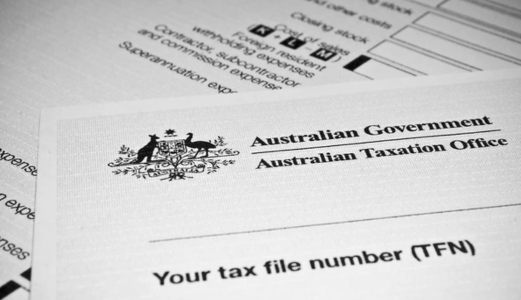$557 million scam threatens your wallet: Here’s how ATO is fighting back
By
- Replies 7
In an age where digital convenience is king, the dark side of our interconnected world reveals itself through the increasing threat of online scams.
The Australian Taxation Office (ATO) is stepping up to combat a particularly insidious form of fraud that's been fleecing Aussies out of a staggering $557 million.
This isn't just pocket change; it's a significant sum that could have been put towards retirement savings, healthcare, or supporting the grandkids.
The scam works like this: fraudsters create fake myGov accounts and link them to the tax files of unsuspecting Australians.
Once they've established this link, they divert tax refunds by changing bank account details and submitting false tax claims.
These bogus claims can amount to thousands of dollars, money that hardworking citizens have rightfully earned.
The ATO is searching for suppliers to develop an 'industry-leading' fraud risk engine.
This isn't just any old software update; it's a cutting-edge system designed to detect, analyse, and prevent fraud in real-time.
Imagine a digital watchdog that can stop, halt, delay, or scrutinise suspicious transactions as they occur, safeguarding your hard-earned money from these cyber bandits.
The urgency of this development cannot be overstated. With over 14.2 million people using the ATO's online services and 2.4 million using the ATO app, the potential for fraud is vast.
The ATO's Counter Fraud Program invests $187 million over four years to bolster digital defences, adopt best practices, and introduce new fraud prevention capabilities.
This investment is a testament to the ATO's commitment to securing taxpayer information and ensuring tax refunds are in the right hands.
For those who have fallen victim to identity theft, the ATO is not leaving you in the lurch.
They're working on making it easier for taxpayers to recover by adopting stronger security measures and improving responses to fraudulent activity.
Real-time messaging in the ATO app will alert taxpayers to high-risk transactions, allowing them to lock their accounts and stop scammers in their tracks.
The real-time fraud risk engine tender will close on 21 March 2025, marking a significant milestone in the fight against tax-related fraud.
But how do these fraudsters get their hands on your information in the first place?
They're crafty, using methods like phishing scams, data breaches, and even dumpster diving to steal identities.
The recent Optus and Medibank breaches are stark reminders of how vulnerable our personal information can be.
The ATO has also noted a rise in phishing scams, particularly those impersonating ATO or myGov communications.
They've issued a stern warning: while they may contact you via SMS or email, they will never send unsolicited messages with hyperlinks to log into online services.
If you receive such a message, it's a red flag. It's crucial to act swiftly to protect your identity and finances.


Have you encountered a tax scam, or do you have advice for fellow seniors on how to stay safe online? Join the conversation in the comments below and help us build a community that looks out for one another in the digital age.
The Australian Taxation Office (ATO) is stepping up to combat a particularly insidious form of fraud that's been fleecing Aussies out of a staggering $557 million.
This isn't just pocket change; it's a significant sum that could have been put towards retirement savings, healthcare, or supporting the grandkids.
The scam works like this: fraudsters create fake myGov accounts and link them to the tax files of unsuspecting Australians.
Once they've established this link, they divert tax refunds by changing bank account details and submitting false tax claims.
These bogus claims can amount to thousands of dollars, money that hardworking citizens have rightfully earned.
The ATO is searching for suppliers to develop an 'industry-leading' fraud risk engine.
This isn't just any old software update; it's a cutting-edge system designed to detect, analyse, and prevent fraud in real-time.
Imagine a digital watchdog that can stop, halt, delay, or scrutinise suspicious transactions as they occur, safeguarding your hard-earned money from these cyber bandits.
The urgency of this development cannot be overstated. With over 14.2 million people using the ATO's online services and 2.4 million using the ATO app, the potential for fraud is vast.
The ATO's Counter Fraud Program invests $187 million over four years to bolster digital defences, adopt best practices, and introduce new fraud prevention capabilities.
This investment is a testament to the ATO's commitment to securing taxpayer information and ensuring tax refunds are in the right hands.
For those who have fallen victim to identity theft, the ATO is not leaving you in the lurch.
They're working on making it easier for taxpayers to recover by adopting stronger security measures and improving responses to fraudulent activity.
Real-time messaging in the ATO app will alert taxpayers to high-risk transactions, allowing them to lock their accounts and stop scammers in their tracks.
The real-time fraud risk engine tender will close on 21 March 2025, marking a significant milestone in the fight against tax-related fraud.
But how do these fraudsters get their hands on your information in the first place?
They're crafty, using methods like phishing scams, data breaches, and even dumpster diving to steal identities.
The recent Optus and Medibank breaches are stark reminders of how vulnerable our personal information can be.
The ATO has also noted a rise in phishing scams, particularly those impersonating ATO or myGov communications.
They've issued a stern warning: while they may contact you via SMS or email, they will never send unsolicited messages with hyperlinks to log into online services.
If you receive such a message, it's a red flag. It's crucial to act swiftly to protect your identity and finances.
Tip
If you suspect you've been targeted by tax identity fraud, don't hesitate to call the ATO on 1800 467 033.
Key Takeaways
- The Australian Taxation Office is enhancing efforts to combat tax fraud with plans for a real-time fraud detection system.
- Fraudsters have fraudulently claimed over $557 million by creating fake myGov accounts and redirecting tax refunds.
- The ATO's Counter Fraud Program aims to invest $187 million over four years to improve digital security and fraud prevention.
- The ATO also supports taxpayers whose identities have been compromised by providing them with better security measures and alert systems.








